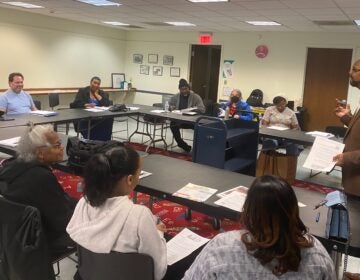LIHEAP spending heating Philadelphia homes doubles
Despite this year’s 9 percent statewide funding cut for the Low Income Heating and Energy Assistance Program, Philadelphia residents received more than double the amount of LIHEAP aid than last year.
One in three Philadelphians qualify for the LIHEAP cash program, a federal grant which fills gaps in heating bills for households earning less than 150 percent of the poverty line. The program opens in November and in its first month of 2012, the Department of Public Welfare granted $3.1 million in LIHEAP funds in the city. In the same period this year, Philadelphians received $7.2 million in the aid. The average amount of aid per household remained mostly constant.
An additional 12,000 households applied this year, a 30 percent increase from 2012. Ken Regal, Executive Director of Just Harvest attributes the increase to a worsening of deep poverty.
“There continues to be a huge poverty and near poverty problem which is what lies at the root of these increase,” Regal said. “Overall I think the experience many poor people have is that they don’t seek public benefits until they are desperately in need. [E]ven though there is not a large difference in how many people were poor this year versus how many people were poor last year, what we may be seeing is an increased level of desperation as they continue to struggle through a tough economy, not seeing better prospects, and being more stuck in dire poverty than people have been in quite some time.”
Another reason for the influx of funding is DPW’s reported uptick in productivity. Overall, DPW has processed 15,000 more applications in Philadelphia compared to this time last year. That’s a 22 percent jump in efficiency.
Housing director for the New Kensington Community Development Corporation Anne Czajka says that before state policies changed last year, LIHEAP was separate from the other welfare services and sent directly to the state for processing. Now, all claims are filed through the city’s central LIHEAP office.
“It used to be that energy coordinating agencies had 14 or 15 sites so people had a place in the neighborhood where they could go directly into and get services. We would do the LIHEAP cash and crisis components. We would then log that in and take it to the state and the state would process it. Now what they’re doing and I think it’s bottlenecking because they’re trying to be a LIHEAP center, a crisis center, and a processing center,” said Czajka.
Cathy Buhrig, Division Director of The Bureau of Policy for DPW, says that last year’s statewide program change worked out some “system issues.” These probably included the backlog of more than 50,000 Philadelphia LIHEAP applications reported by KYW-AM in March 2012. She explained the consolidation has streamlined the application process so that at the state level, information isn’t entered twice.
“As it currently stands, if there’s information received and the people are receiving other benefits, the information is entered into the system once… which allows for some efficiencies in the department.” Buhrig says her department is currently concerned with receiving the last 10 percent of this years federal allocation in January.
CLS lawyer Thu Tran says even though LIHEAP is a federal program, Pennsylvania’s administration of it cannot be compared to that of neighboring states because the income burden for repaying heating bills here is much higher. Assistance covers heating expenses that exceed 17 percent of monthly income. In New Jersey, the max is 6 percent and in Ohio it’s 10 percent. Customer Assistance Programs offered by utilities also use these thresholds.
“Here, each utility has a different program and LIHEAP is applied differently to each of those programs. In recent years there were proposals to use LIHEAP to pay down the subsidy that is provided by the Customer Assistance Programs. We resisted that because people need the grants to pay down their already high energy burden. It’s fine if Ohio and New Jersey does it their way incorporating LIHEAP into their Customer Assistance Programs because the energy burden there is much lower,” Tran said
If anything, says Regal, these statistics illustrate how public assistance programs impact poor families for politicians and social workers alike. “It’s a useful reminder to them how desperately needed these programs are and how critical a factor in people’s fundamental well being it is to be able to pay your wintertime heating bill and keep food on the table,” he said.
WHYY is your source for fact-based, in-depth journalism and information. As a nonprofit organization, we rely on financial support from readers like you. Please give today.




